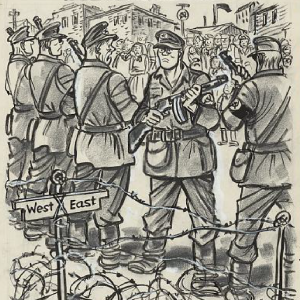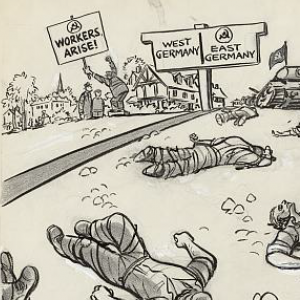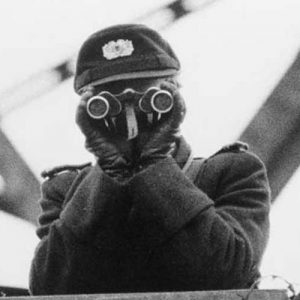Berlin Wall
The Berlin Wall (1961-1989) was a guarded, concrete wall between West Berlin (controlled by the Western Allies) and East Berlin (the Soviet sector of Berlin and the capital of East Germany). It was constructed by East Germany, officially known as the German Democratic Republic, and was described by its government as a barrier protecting its people from “fascist elements.” The Berlin Wall closed off the population flow between East Germany and West Germany. Between 1949 and 1961 about 2.5 million East Germans had fled to the West. By the 1980s the Wall, including electrified fences and fortifications, extended 28 miles (45 km) through Berlin and a further 75 miles (120 km) around West Berlin. It came to physically symbolize the Iron Curtain that separated Western Europe and the Eastern Bloc during the Cold War. The Berlin Wall was demolished in 1989 as a result of the wave of democratization in East Europe, and was followed by the unification of Germany in 1990.


















